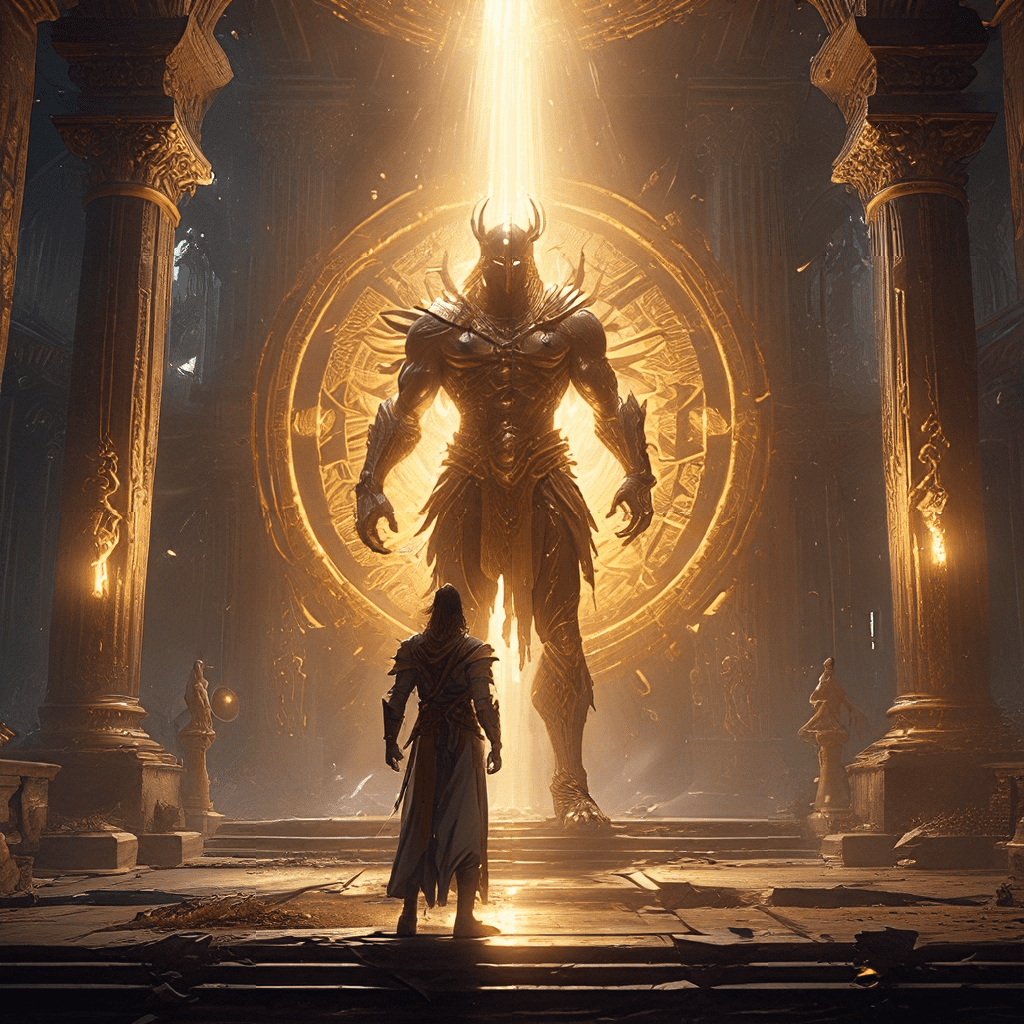I. Introduction: The Significance of Ra
In the rich tapestry of ancient Egyptian mythology, Ra stands as a figure of profound importance, embodying the very essence of life, creation, and the journey to the afterlife. As the god of the sun, Ra was believed to be the source of all light and warmth, bringing life to the world every morning. His celestial voyage across the sky mirrored the cyclical nature of existence, with his setting marking the end of day and the descent into the underworld. Ra’s power extended beyond the realm of the physical world, shaping the fate of the soul after death. He was the guardian of the Duat, the Egyptian underworld, and a guide for the deceased on their journey to the afterlife.
II. Ra’s Creation Myth: From the Primordial Waters
The creation myth surrounding Ra paints a picture of his emergence from the primordial waters, known as Nun. In this chaotic and void state, Ra existed as the sole being, self-created and embodying the potential for all that was to come. From his own being, Ra brought forth the world and the deities who would inhabit it. He breathed life into the cosmos, creating the air and the earth, and his tears became the Nile River, the lifeblood of ancient Egypt. Ra’s role as the originator of all life and light cemented his position as the supreme deity in the Egyptian pantheon.
III. Ra’s Daily Journey: The Celestial Boat
Each morning, Ra embarked on his journey across the sky in his solar boat, the “Manjet.” This voyage represented the daily cycle of the sun, from its rising in the east to its setting in the west. The Egyptians believed that Ra’s journey was a vital part of the world’s sustenance, bringing forth the warmth and light necessary for life to flourish. As the sun god, Ra’s movements held deep significance in Egyptian cosmology. Sunrise marked the beginning of a new day, a time of rebirth and renewal, while sunset signified the end of the day and the transition into the realm of the dead. During his journey, Ra faced numerous challenges, notably his battle against Apophis, the serpent of chaos. Apophis threatened to engulf the sun god, plunging the world into darkness. Ra’s triumph over Apophis ensured the continued cycle of light and life.
IV. Ra’s Transformation: The Evening Sun
As the day progressed, Ra transformed from the youthful and vibrant morning sun to the aged evening sun, representing the passage of time and the inevitable approach of death. The setting sun symbolized the descent into the underworld, a realm shrouded in mystery and associated with the god Osiris, the god of the dead. This transformation echoed themes of death and rebirth, mirroring the cyclical nature of life. The Egyptians believed that Ra, in his evening form, was connected to the god Atum, the creator deity who represented the culmination of Ra’s journey. Atum, like Ra, was a self-created god who emerged from the primordial waters. This connection reinforced the idea of Ra as the source of life and the one who oversaw the cycle of creation and destruction.
V. Ra’s Connection to the Afterlife: The Duat
Ra’s role extended beyond the realm of the living, encompassing the afterlife as well. He ruled over the Duat, the underworld, and guided the souls of the deceased on their journey through this mystical realm. The Duat was a complex and perilous labyrinth filled with challenges and tests that determined the fate of each soul. Ra’s presence in the Duat meant that the deceased were not truly separated from him. The afterlife, in Egyptian belief, was a continuation of life in the presence of Ra, a continuation of the journey that had begun on earth. The souls of the dead encountered Ra during their passage through the Duat, facing his judgment and seeking his favor. Ra’s role as judge ensured that the souls of the righteous would find eternal peace and join him in the afterlife.
VI. Ra and the King: Divine Authority
The pharaoh, the ruler of Egypt, was viewed as the earthly representative of Ra, holding the divine authority bestowed upon him by the sun god. This connection was a key aspect of the pharaoh’s legitimacy and power. The king’s role as the link between the divine and earthly realms was reinforced through rituals and symbolism. Pharaonic monuments were often aligned with the sun’s path, reflecting the king’s connection to the celestial realm and his role as a divine intermediary. The pharaoh’s power, in essence, was derived from Ra’s divine energy. The king’s strength, wisdom, and authority were seen as extensions of Ra’s own power, making the pharaoh a living embodiment of the sun god’s presence on earth.
VII. Ra and the Sun Cult: Temples and Offerings
The sun cult in ancient Egypt centered around Ra, with numerous temples dedicated to his worship. These magnificent structures served as places of pilgrimage and ritual, where priests and devotees offered prayers and sacrifices to the sun god. The most famous of these temples was the temple of Karnak, located in Thebes, which was dedicated to the worship of Ra and his various forms. Offerings of food, incense, and precious metals were presented to Ra, symbolizing the devotion and gratitude of the people. These offerings were believed to appease the sun god and ensure his continued blessings on the land and its inhabitants. The sun cult was a vital aspect of Egyptian life, influencing their art, architecture, and their understanding of the cosmos. Ra’s image permeated Egyptian culture, reminding people of the power and significance of the sun god who presided over life and death, creation and destruction.




